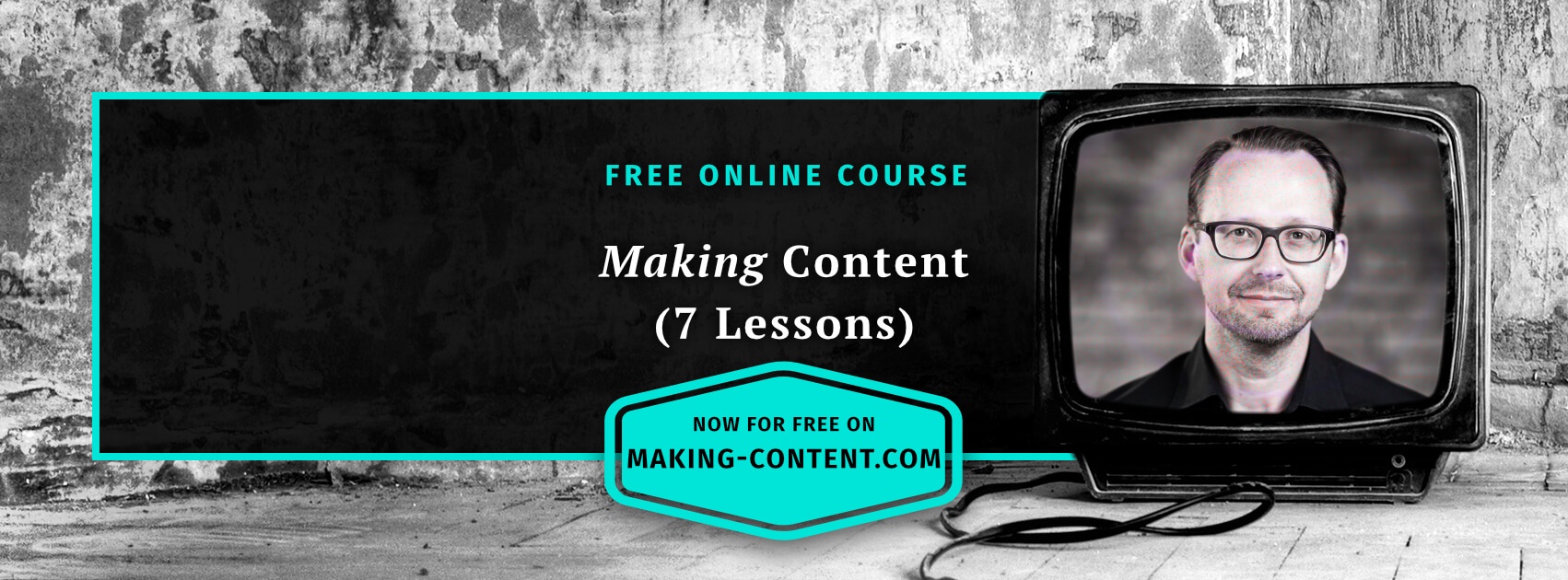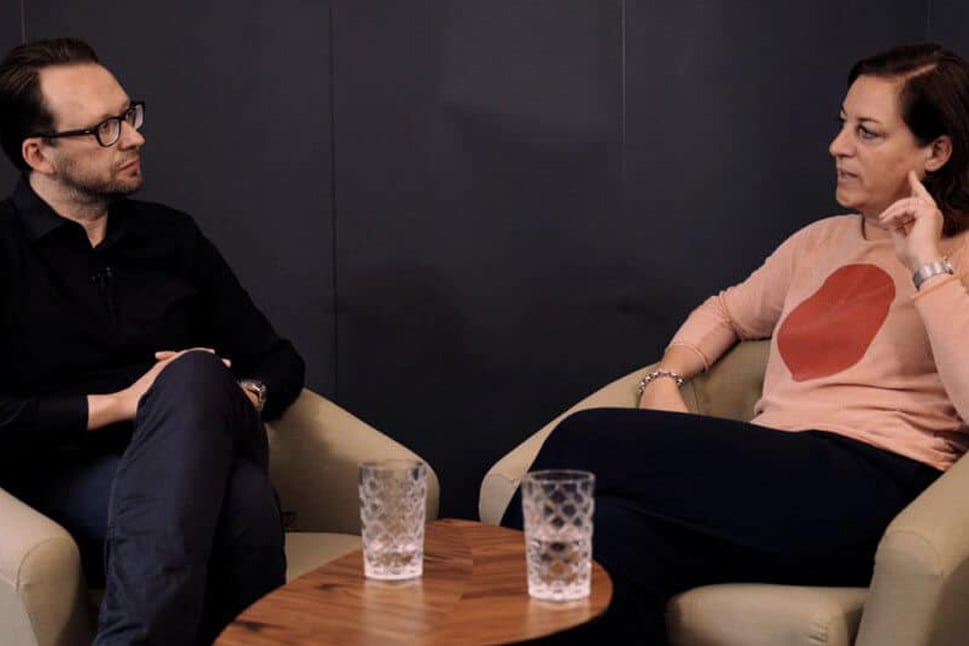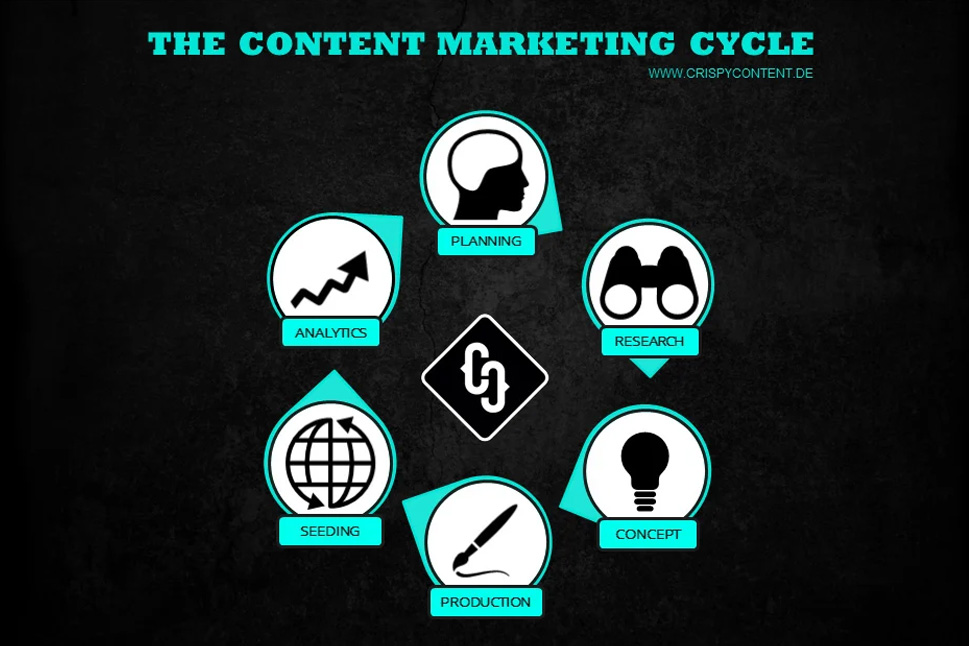The Conversion Funnel
Last updated on November 21, 2021 at 06:12 AM.Customer acquisition and lead generation is the major goal behind ROI-oriented content marketing. The path from anonymous user to paying customer and engaged follower can be extremely complex and diverse. This is precisely why marketers need a conversion funnel in order to keep oversight on this process.

What is a conversion funnel?
In the same manner as a customer journey, a conversion funnel is a process that describes customer acquisition and conversion. And even though it has already been around for more than 100 years, the basics are still the same.
A conversion funnel works in the same manner as the term itself: there is a broad top end where potential customers are pooled and then paying customers drip slowly down through to the bottom, in which a payment marks a "conversion". A conversion funnel typically consists of four stages of the purchasing process. These are:
- Awareness - the potential customer becomes aware of a type of product or service.
- Interest - the potential customer begins to engage with a group of products or services.
- Desire - the potential customer narrows their interest to a certain brand or product.
- Action - the customer purchases their chosen product.
These stages form the acronym “AIDA.” While the stages don’t necessarily fit every marketing and sales scenario exactly, AIDA does form a good basic outline to follow. Over the past 100 years marketing and sales have exploded, so the concepts within AIDA have of course been updated and adapted over that time. Nowadays, funnel stages have many more variables and are sometimes combined or changed. They also monitor the process of customer loyalty and take into account different technologies or changes in customer purchasing patterns.
The Customer Journey vs. The Conversion Funnel
A conversion funnel outlines how we guide potential customers during their customer journey to the point of conversion. It is a tool that helps us clarify how to formulate a content strategy that results in concrete numbers and conversions.
The customer journey and the conversion funnel are two ways of looking at the same thing: the customer acquisition process. The customer journey provides a blueprint for the conditions of each funnel stage, i.e. when the user is in which stage and how the stages are interconnected. We would therefore refer to it as a more passive and descriptive overview.
On the other hand, the conversion funnel describes where the customer would be in the future. To create a conversion funnel, we have to continuously ask ourselves what we need to do to create conversions, or whatever desired effect we’re looking for. In this sense, it takes a much more active and creative approach.
Nonetheless, the two concepts often overlap. A typical question that’s asked on this topic is whether we should base decisions more on the customer journey of real customers or by the conversion funnel we strive to achieve. The answer is both.
Since the goal of ROI-oriented content marketing is to achieve something, we need to actively set concrete goals per various funnel stages. These goals should be based on how a user transforms from a prospect into a paying customer.
A Conversion Funnel Example: A Product Launch
Say we’d like to launch a new product: a monthly subscription software called "Webguard". Our software provides legal protection from warning letters and resulting legal issues due to not being compliant with GDPR.
We start off by investing our marketing budget in Google Ads. We know that from 100.000 impressions, we generate 10.000 website clicks. This means that only 10% of users who see the ad actually visit the site.
We use website content to encourage those who do visit the website to download informational content in exchange for their email address. Only 10% of visitors do this. So, from 10.000 website visitors, we get 1.000 email addresses as a result of this download.
The email subscribers then receive further information about the advantages of using our product. Some of these subscribers are convinced and convert to customers, but only about 3%. We've then gained 30 customers from our email subscriber list.
The concept behind a conversion tunnel is entirely numbers driven.
Now we need to consider how we want to achieve these goals. When we use content marketing for a conversion funnel, we use content that is relevant to customers depending on their particular funnel stage. In order to define this, we build a customer journey that outlines how a customer moves from A to B. We also determine what content we use to do so and where and how the customer will see it. The content is then assigned to its respective position in the customer journey.
A Customer Journey Example: A Product Launch
Stage 1: Awareness
In this stage, the user is not yet aware of our product. Nonetheless, they do have a problem that we want to solve with our product, which in this case is the fear of receiving warning letters resulting from GDPR misuse. Our potential customer is someone who owns or operates a website and needs help making sure that the website is GDPR compliant. This person does a few Google searches on how this works using a term like "website GDPR compliancy" and then finds "Webguard" listed in the paid search results. In our Google Ad, we guarantee a solution for the current problem like "an overview of GDPR regulations for website owners." As a result, the user visits the website and finds this particular information available for download in exchange for their email address.
Stage 2: Consideration
In this stage, that user probably realizes that there are solutions to their problem, even multiple solutions. Now they need to find out which one is the best. During this stage for user's problem becomes: which is best for me? We answer with: it depends, but we're happy to provide more information and help you make the right decision.
This additional information is provided in the manner we already mentioned: we make it available for the user to download. Our downloadable content already includes a comparison of different products that relate to various starting scenarios for different users. Because we've already considered the target group for our product during the customer development process, it becomes less problematic to discuss and compare potential competitors. In the end, the goal is to provide objective information, not to advertise. Even still, here's where we put our product "Webguard" into play.
We build brand authority and convey our expertise through these comparisons. This helps the user feel that we are trustworthy and that our perfectly developed solution is the best decision. In the evaluation process, we should be the winner.
Stage 3: Decision
We measure how well this strategy worked or didn't work based on the goals we set for our conversion funnel.
This is precisely why the customer journey and conversion funnel complement each other and give us a more detailed overview of the customer acquisition process.
The Conversion Funnel in Marketing
In content marketing, the conversion funnel plays an additional role: structure. This is because a funnel visualizes the flow and process for how a potential user turns into a paying customer. The necessary marketing efforts required to carry out the funnel can include SEO, social media marketing, paid advertising, or email marketing. How these methods are set up is based on the intermediate goals that can be achieved in various stages of the conversion funnel.
Example: Defining Goals
To continue with our product example of "Webguard", one of our first intermediate goals could be to increase the number of hits on our website, otherwise known as increasing reach. We can increase the number of hits by doing more Google Ads, a part of paid media. It therefore makes sense that our goal to increase reach is at the top of our conversion funnel. We can then make the conclusion that paid media is a top of funnel tool.
Could Google Ads also be applicable to other funnel stages? If we refer back to how our potential customer makes a decision about our product, they need to go through the "Awareness" and "Consideration" stages before the "Decision" is made at the bottom of the funnel. With Google Ads we can most certainly get more attention.
But can we comprehensively prove in a small text advertisement that we are experts in the field, are trustworthy, and that we've already developed the perfect solution with our product "Webguard"? Probably not. Would we also agree to a comparison of our product with our competitors within this ad? Also not. This is because every click on the ad costs money and would make our users more aware of our competitors. As a result, paid media like Google ads is unsuitable for achieving our goals for the middle of funnel.
Furthermore, can we inform the user within a short text advertisement about the advantages of our product to such an extent that they get the feeling that they should buy it right here and now and can trust they've made the correct decision? No. Google is only a search engine. The user won't likely associate our brand name "Webguard" with their problem or assumed solution. Probably they don't even know about our product. With Google Ads, we've only got a few lines to fill in, so this makes it impossible to explain anything about the scope of our product, the level of legal protection we can provide and the cost savings of not having to hire a lawyer. When a potential customers starts their information search and finds us, they are considered "cold." We can in no way expect a conversion and we've already invested money in their click. So, we can also conclude that paid media like Google Ads isn't suitable for our bottom of funnel goals as well.
In some circumstances, Google Ads can be used to directly convert customers, but not for all products. This could work, for example, if we're selling Nike Air Max shoes, because we can:
- list a fixed price,
- use a brand name that is already widely respected with the target group,
- and add images to convey further information about the product,
- which directly highlight our product's advantages such as weight, ecological footprint, or whichever type of material is used.
With these elements, it can be possible to use Google Ads to make direct conversions.
To put it more simply: if a product can be sold with images and a fixed price, then how its related content is displayed helps encourage the customer to purchase.
What this example shows is how the conversion funnel acts as toolbox. We can use many different compartments to place tools (methods) and our work materials (content). Each tool and work material belongs in a designated place.
 Gerrit Grunert
Gerrit Grunert
Gerrit Grunert is the founder and CEO of Crispy Content®. In 2019, he published his book "Methodical Content Marketing" published by Springer Gabler, as well as the series of online courses "Making Content." In his free time, Gerrit is a passionate guitar collector, likes reading books by Stefan Zweig, and listening to music from the day before yesterday.
![[FREE Ebook] Content Marketing Tools Essentials](https://no-cache.hubspot.com/cta/default/463294/02a763e7-df79-4758-ba35-000e19399736.png)





























































































